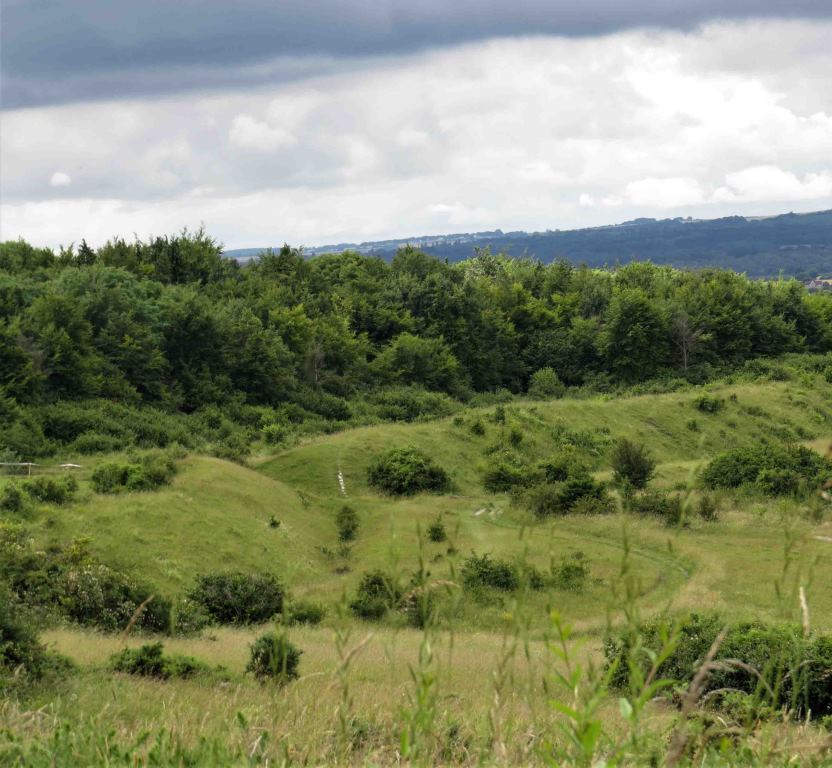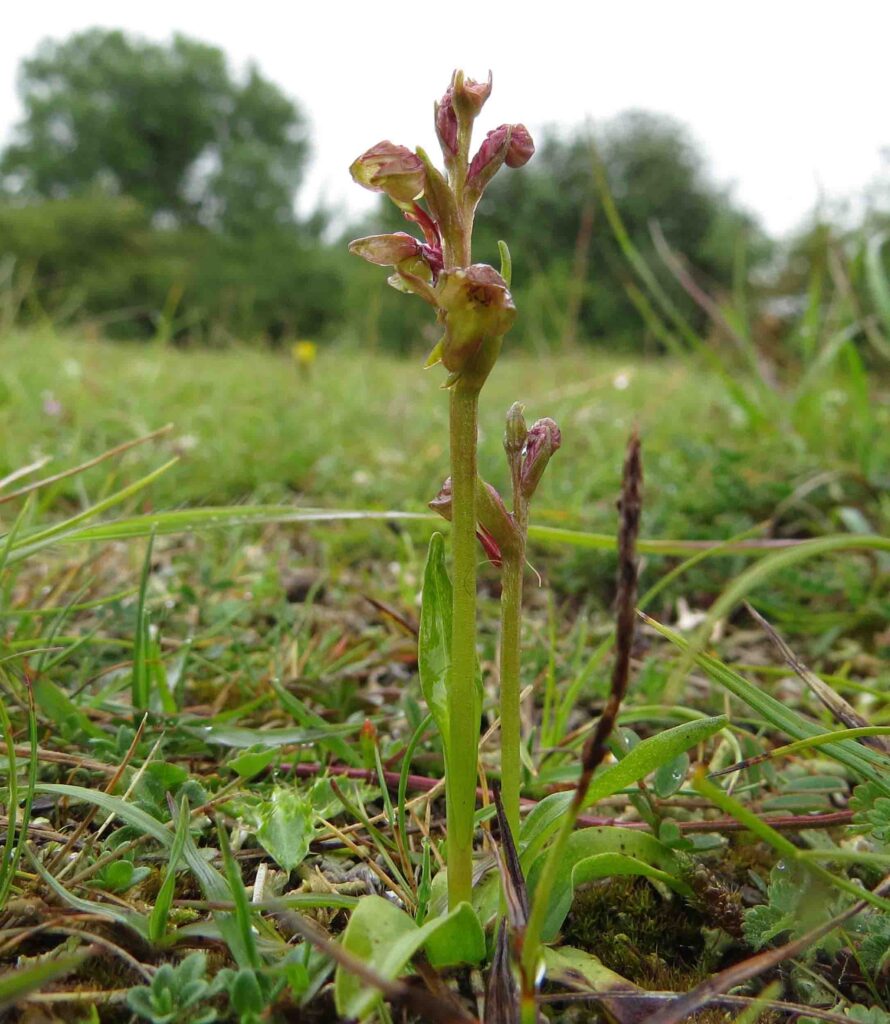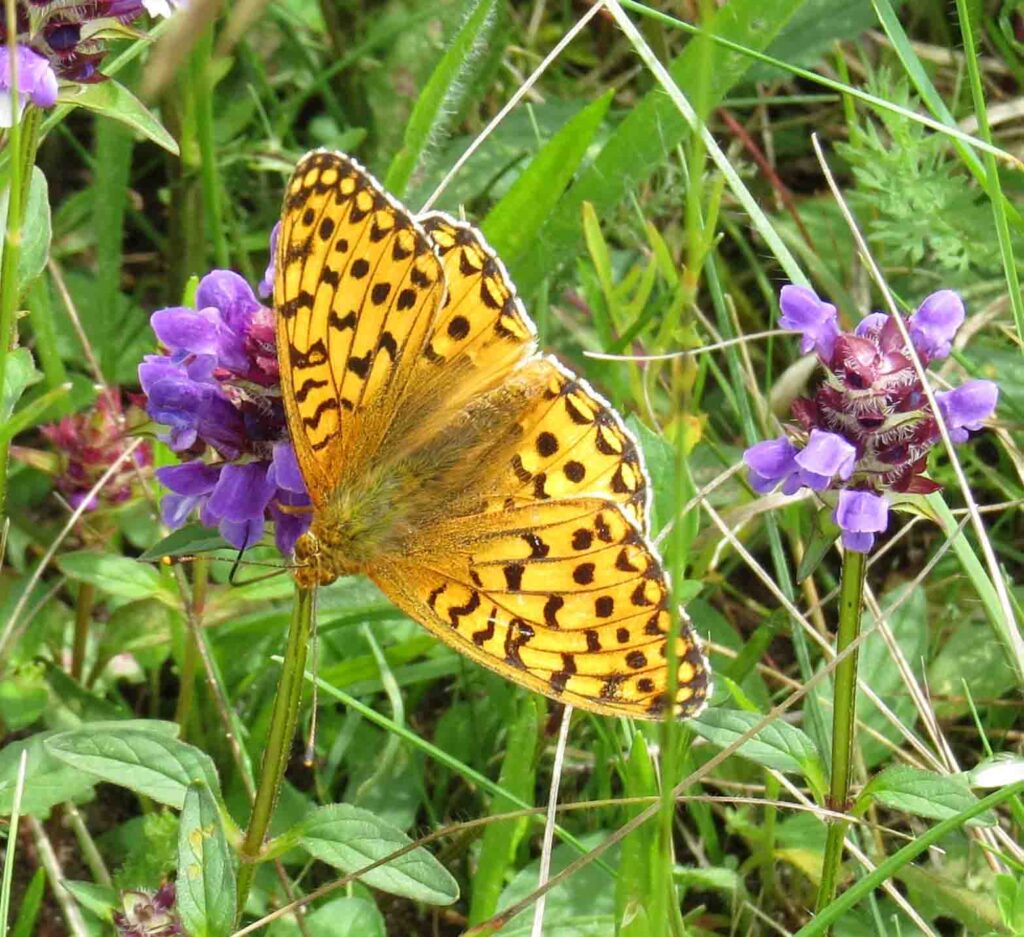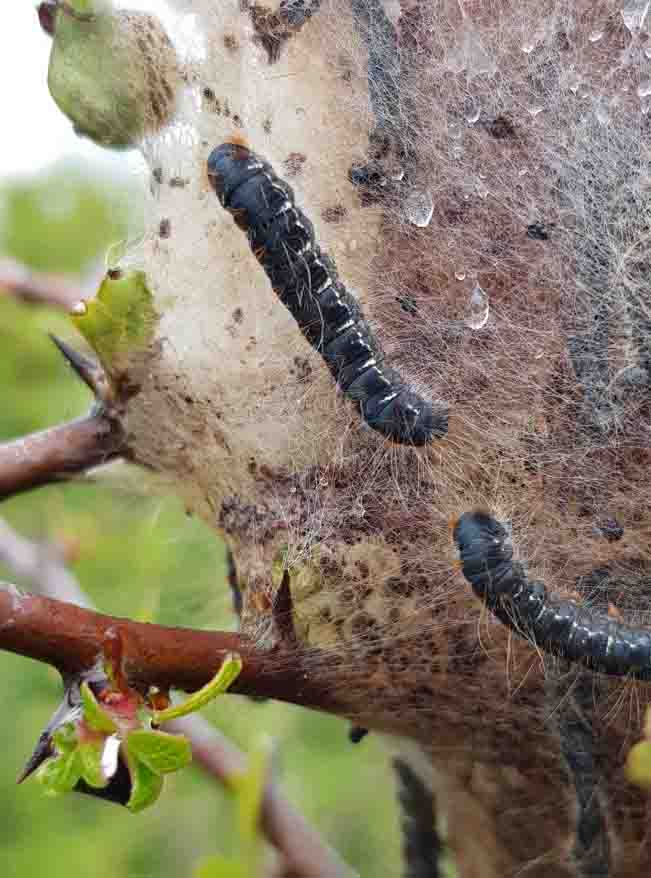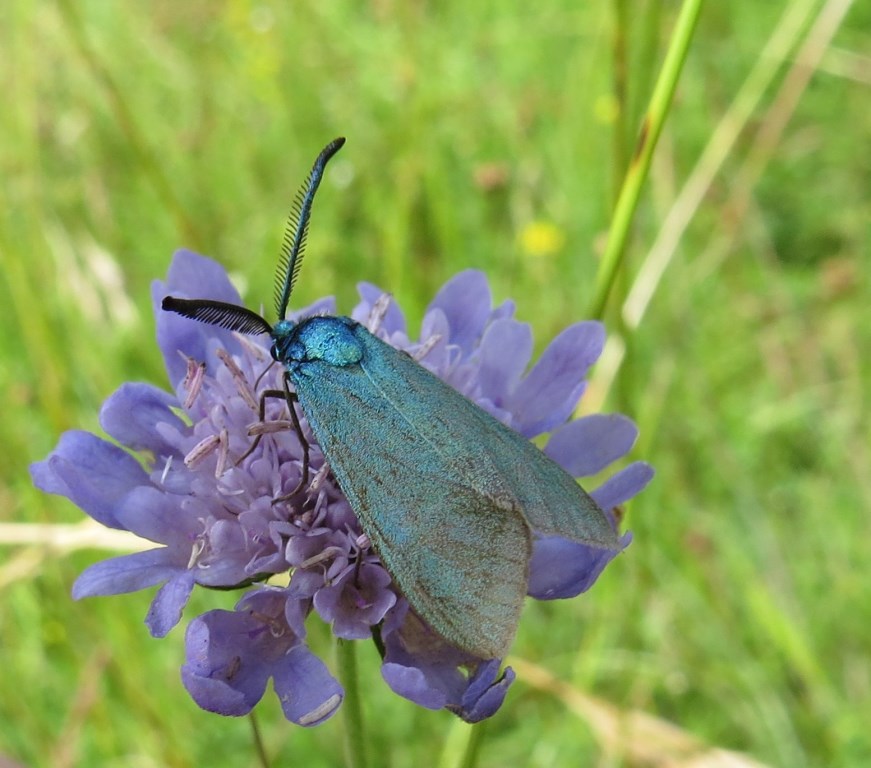Sarah White led an all-day visit to Martin Down National Nature Reserve, between Salisbury and Blandford, on Saturday 10 July. After a damp start, the clouds gradually thinned and eventually the sun came through. Songs of Yellowhammer and Whitethroat were heard as the group started out along a track which led through a band of scrub, before opening out onto a vast expanse of chalk grassland. The grassland was coloured by the white of Dropwort, Common Valerian and Yarrow, the yellow of Lady’s Bedstraw, Agrimony and Yellow Rattle, and the purple of knapweeds, Small Scabious and Wild Basil. Common-spotted and Pyramidal Orchids dotted the turf and there was a continuous background chorus of Skylark and Corn Bunting song. Next to the track were a series of high banks, the remains of wartime earthworks. These were covered with flowers, including Wild Thyme, Squinancywort, Salad Burnet and Common Gromwell. Large flocks of Linnets and Starlings were seen. Beyond the wartime earthworks was a scraped area with very short turf, where the tiny yellow-green flowers of Bastard-Toadflax were found, together with the leaves of Horseshoe Vetch and twisted tufts of Dwarf Sedge, a local rarity. A sharp-eyed observer spotted a tiny Frog Orchid, then gradually more and more specimens were found. The walk continued along Bokerley Dyke, a Bronze or Early Iron Age bank and ditch. A Corn Bunting sang from a bush on top of the Dyke, and then, further on, a Spotted Flycatcher darted out and back from the edge of the trees beyond the Dyke in its characteristic fly-catching flight.
The walk continued across open grassland past the first Fragrant Orchids. Then the sun came out and butterflies started to appear – Marbled White, Meadow Brown, Small Heath and large numbers of Dark Green Fritillary. A larval web on a bush next to the path was home to caterpillars of the Small Eggar moth. According to the Hantsmoths website, Martin Down is the last remaining Hampshire location for this nationally scarce moth. Its numbers have been drastically reduced by severe trimming of hedgerows during the larval season. While lunch was being consumed beside one of the grassy tracks, a Small Blue butterfly landed on Sarah’s hand, attracted by the traces left by her lunchtime orange. It then moved its way around the group, perching on one person’s boot and another’s shirt. Several large patches of Kidney Vetch, the caterpillar food-plant of the Small Blue, were found nearby. The route led back up to a shorter-turfed section of Bokerley Dyke. In an adjoining patch of scrub were the remains of three Greater Butterfly-orchids and a Common Twayblade. Dwarf Thistle and mats of Common Rock-rose were seen at the side of the track as it climbed steeply up to the top of the slope near Grim’s Ditch. There was a fine display of Common Centaury and a Saw-wort plant, not yet in flower, was found beside the path. Acid-loving plants started to appear, including Gorse, Heath Groundsel , Sheep’s Sorrel and Heath Bedstraw. One of the small metallic green forester moths was resting on a Small Scabious flower head. Martin Down is the sole remaining location in South Hampshire for the Forester, whose larval foodplant is Sheep’s Sorrel. Bullfinches called from deep within the scrub, then a Tawny Owl was heard. A narrow path led through a strip of woodland and back out to the top of the grassland, giving extensive views across the reserve. Some of the surrounding farmland has been converted back from arable to grass. Below, a male Stonechat on top of a scrubby bush had food in its bill. A little further on, several plants of Round-headed Rampion were just coming into flower and there were a few specimens of Hairy St-John’s-wort, with unhealthy-looking yellowish green leaves. On the walk back to the start, a distant Sparrowhawk was seen and a brown spike of Knapweed Broomrape was found beside the path. Back at the car park, a Yellowhammer was having a bath in a puddle. Dark clouds were gathering, but the torrential rain held off for long enough for everyone to get under cover.
Pictures by Fiona Brown and Laurie Haseler

